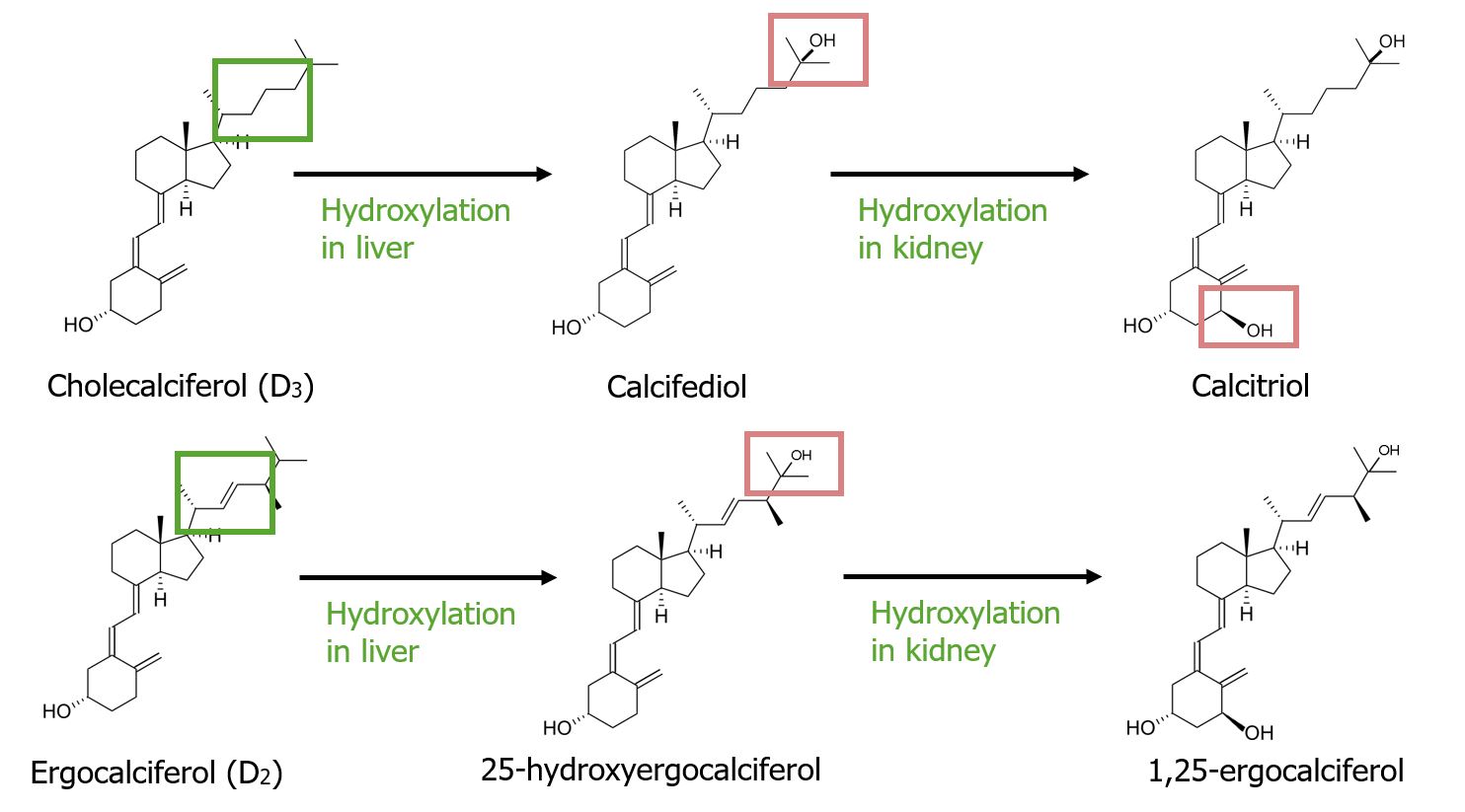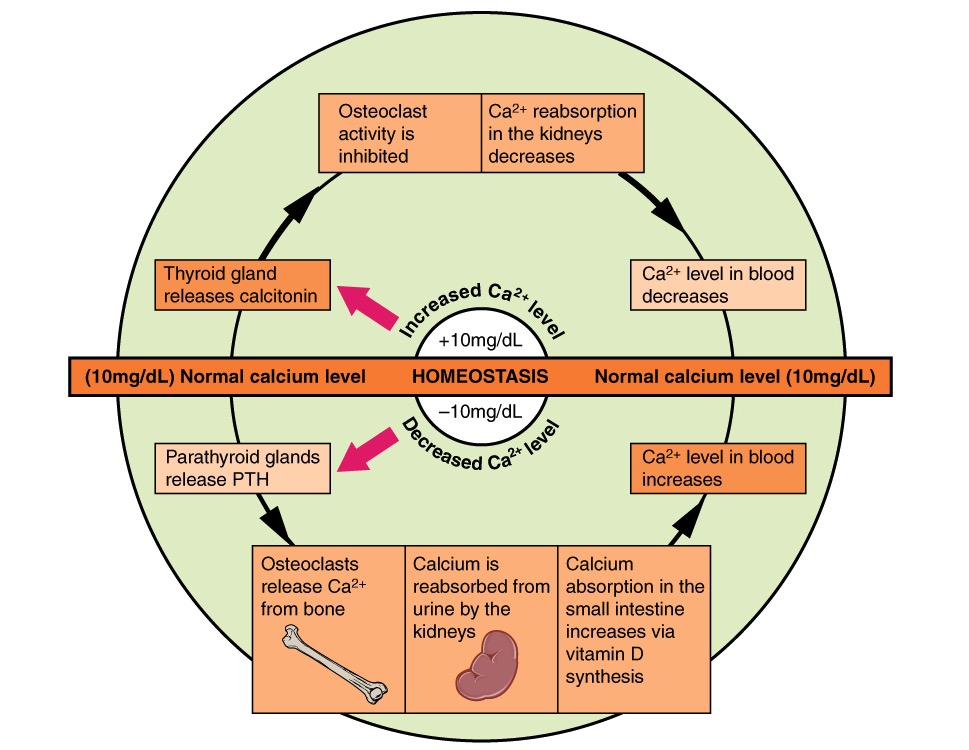Playlist
Show Playlist
Hide Playlist
Vitamin D (Calciferol, Calcitriol)
-
Slides FatSolubleVitamin Nutrition.pdf
-
Download Lecture Overview
00:00 Then we move on to our final fat soluble vitamin. 00:05 Vitamin D, calciferol or calcitriol. 00:10 Vitamin D has a number of different forms. 00:13 The vitamin that we take as a supplement will generally be in the D3 form. 00:19 And it is involved in metabolic pathways that involve increase in calcium absorption and stimulating osteoblasts. 00:29 So that they deposit calcium into the bones. 00:33 So here we can see the pathway that the biggest key here I can say is, it relies on the sun to take a cholesterol and turn it into vitamin D3. 00:45 So the sun is ultimately our best source of vitamin D3. 00:50 You can see that's along the way there are various conversions to make D3 into it's active form that we can use which is the calcitriol. 01:00 And that is use in all the different processes that we have discussed. 01:05 Also I want to bring to light and as it's with the sun, the same cholesterol molecule in D3 pathway leads to the manufacture of many of our steroid hormones. 01:17 So stay in the sun. 01:20 So what's sorts of things can lead to a vitamin D deficiency. 01:25 Well, the first one that we may not jump to the conclusion of is breast milk and no sunshine. 01:32 Because unlike cows milk which we fortify, breast milk does not actually contain adequate vitamin D on it's own. 01:41 And so sun exposure is critical. 01:44 So make sure that your patient's children get plenty of sun along with the breast milk. 01:51 And the next thing that we can see from a deficiency is either in children or in adults. 01:58 Rickets is a symptom we don't see it much in the United States. 02:02 But results from a vitamin D deficiency. 02:05 Because we see less calcification of the bones. 02:08 On occasion we'll see that demineralization or loss of minerals from the bones in adults. 02:16 In which case we call it osteomalacia. 02:18 In the case of osteomalacia, it can result from vitamin D deficiency obviously. 02:26 But I've read some articles recently, about how a drug addiction and alcoholism can actually impact the absorption of vitamin D unless mineralization of the bones. 02:39 And literally the bones will become quite bendy. 02:41 And we can also see this deficiency evident in older adults. 02:48 Because if there's less vitamin D then there is less minerlization. 02:54 And thus we have much more likelihood of damage to the bones and fractures and such. 03:00 So on that note, here's a quick summary of all of our fat soluble vitamins. 03:08 Recall that visual and take a moment before you move on to another lecture to write down everything that you remember about the naked fat soluble vitamins. 03:21 And I look forward to seeing you in the next lecture.
About the Lecture
The lecture Vitamin D (Calciferol, Calcitriol) by Georgina Cornwall, PhD is from the course Nutrition. It contains the following chapters:
- Vitamin D - Calciferol, Calcitriol
- Summary: Fat Soluble Vitamins
Included Quiz Questions
Which vitamin can become deficient in infants who are exclusively breastfed?
- D
- C
- E
- A
- B
A mother comes to you with her young son. She has noticed that his forehead looks larger and his legs seem bowed. On exam, you notice he has scoliosis. His lab work reveals hypocalcemia. Which is the most likely diagnosis?
- Rickets
- Osteomalacia
- Osteomyelitis
- Osteogenesis imperfect
- Renal osteodystrophy
Customer reviews
5,0 of 5 stars
| 5 Stars |
|
5 |
| 4 Stars |
|
0 |
| 3 Stars |
|
0 |
| 2 Stars |
|
0 |
| 1 Star |
|
0 |





